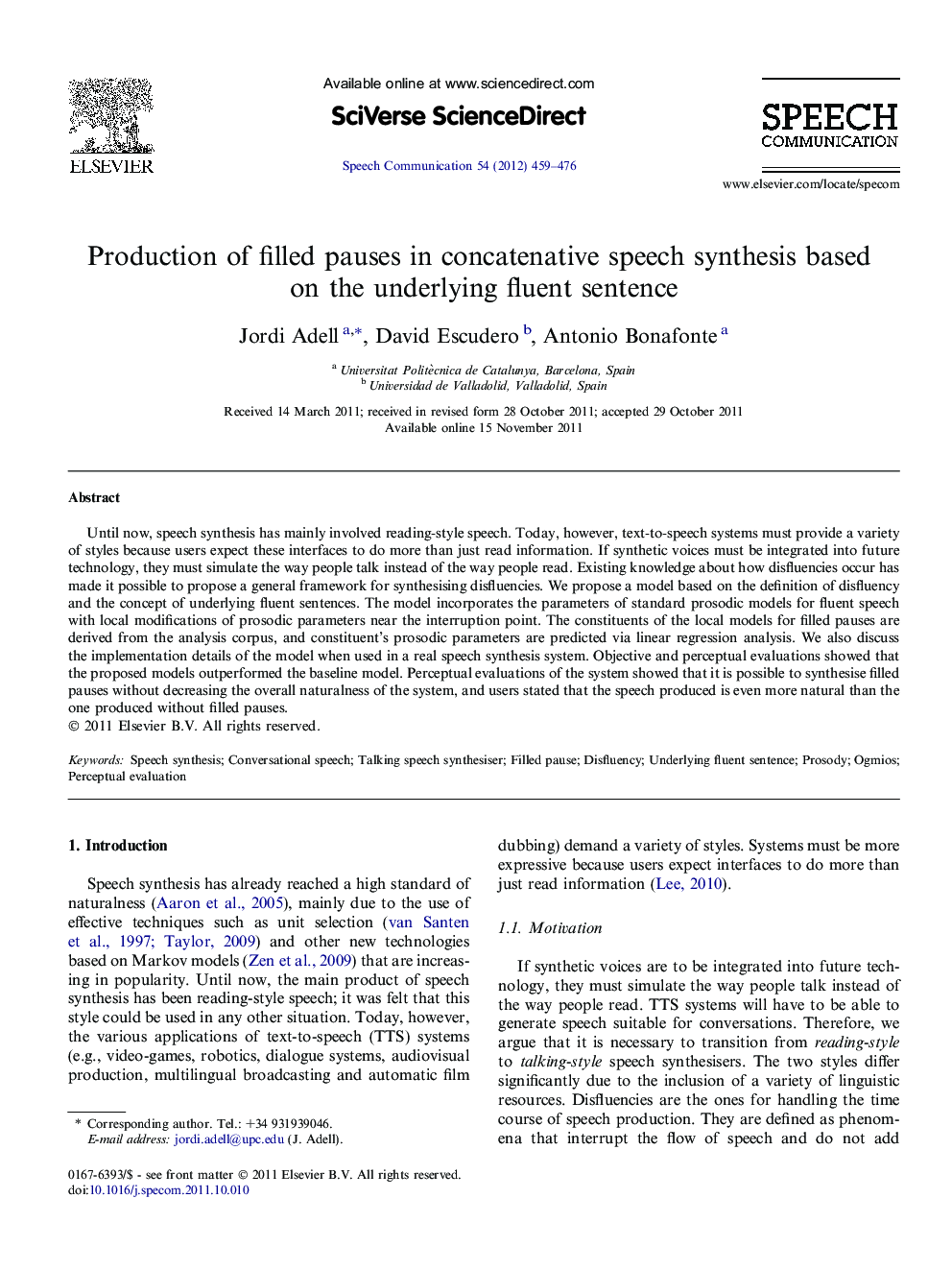| Article ID | Journal | Published Year | Pages | File Type |
|---|---|---|---|---|
| 567489 | Speech Communication | 2012 | 18 Pages |
Until now, speech synthesis has mainly involved reading-style speech. Today, however, text-to-speech systems must provide a variety of styles because users expect these interfaces to do more than just read information. If synthetic voices must be integrated into future technology, they must simulate the way people talk instead of the way people read. Existing knowledge about how disfluencies occur has made it possible to propose a general framework for synthesising disfluencies. We propose a model based on the definition of disfluency and the concept of underlying fluent sentences. The model incorporates the parameters of standard prosodic models for fluent speech with local modifications of prosodic parameters near the interruption point. The constituents of the local models for filled pauses are derived from the analysis corpus, and constituent’s prosodic parameters are predicted via linear regression analysis. We also discuss the implementation details of the model when used in a real speech synthesis system. Objective and perceptual evaluations showed that the proposed models outperformed the baseline model. Perceptual evaluations of the system showed that it is possible to synthesise filled pauses without decreasing the overall naturalness of the system, and users stated that the speech produced is even more natural than the one produced without filled pauses.
Graphical abstractFigure optionsDownload full-size imageDownload as PowerPoint slideHighlights► We propose a method for generating filled pauses in unit-selection speech synthesis. ► The underlying fluent sentence model is a general framework for the prosodic modelling of disfluencies. ► Linear regression analysis can model local prosodic variation in the case of filled pauses. ► We detail the architectural concerns related to the conversational module of the Ogmios speech synthesis system. ► Perceptual tests validated the method for isolated sentences as well as for a pragmatic scenario.
